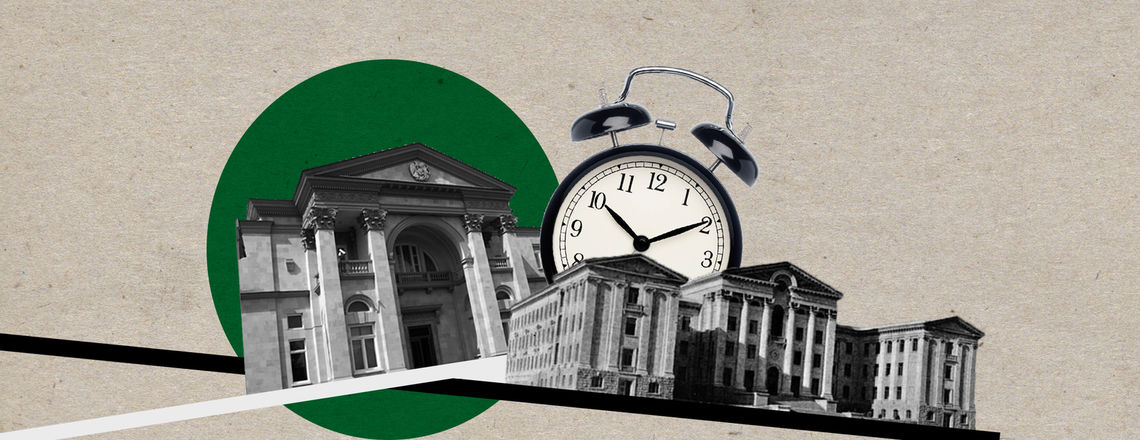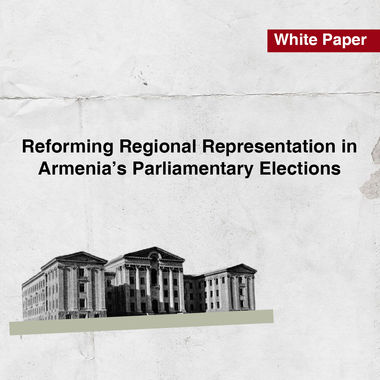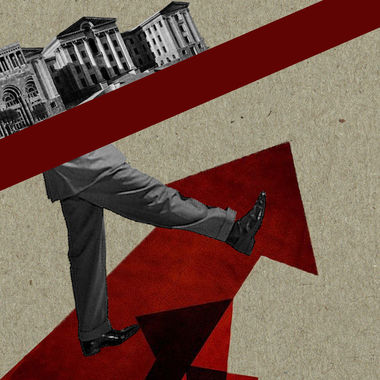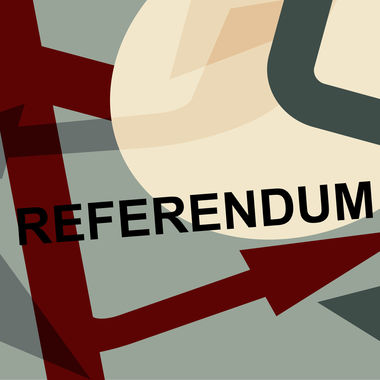
Two years ago, on April 17, 2018, 77 of the 105 Armenian MPs at the time voted for Serzh Sargsyan to become the next Prime Minister, extending his reign over the country beyond his presidential two-term limit. It should not have come as a surprise. His critics had accused him of preparing for the power grab as far back as 2015, when a constitutional referendum promised to shift the country from a presidential to a parliamentary system. It was a move similar to how Vladimir Putin had successfully maintained his dominance over Russian politics when he changed roles from President to Prime Minister in 2008.
Supporting the move would end the career of most of those 77 MPs. All 58 MPs from the Republican Party of Armenia (RPA) were present and voted in favor, as well as all seven MPs from their coalition partner, the Armenian Revolutionary Federation (ARF). They did not expect at the time that it would cost them their job only eight months later, with the December 2018 snap election. From those groups, only Shirak Torosyan, Knyaz Hasanov and Arsen Mikhaylov still sit in the legislature, now as members of Pashinyan’s My Step Caucus. You can read their stories of redemption in a previous article.
The Prosperous Armenia Party (PAP) had been split on the vote. Twelve voted in favor, 13 against and six were absent or did not vote, including party leader Gagik Tsarukyan. Of the twelve that voted in favor, only four, Karine Poghosyan, Arayik Aghababyan, Hrant Madatyan and Davit Manukyan are still in office.
A Step Was Taken
The only unequivocal opposition came from the Way Out (Yelk) Alliance. All nine of their MPs either voted against or were absent from the vote as they were leading protests in the streets. We all know the story about how Serzh Sargsyan resigned as Prime Minister only six days later because of those protests.
However, two years later, the guardrails that Serzh Sargsyan removed remain discarded, with virtually no public discussion to replace them. There are no legal barriers that prevent one person from ruling the country for life. Even if the current Prime Minister enjoys a high approval rating and has no intention of overstaying his welcome, it is important to seal the victory of the Velvet Revolution by re-codifying term limits so that never again will the Armenian people have to resort to a mass uprising (with the accompanying risk of violence) to remove a government that is not meeting their needs.
But All the Other Kids Are Doing It!
In Armenia’s post-Soviet neighborhood, it has become trendy for presidents to put off their retirement by successfully eliminating the term limits that were included in their post-independence constitutions.
An early mover was Belarus’ Alexander Lukashenko. The 1994 version of the Belarussian constitution originally limited presidents to serving two five-year terms. Lukashenko extended his first term to seven years and then eliminated term limits altogether through referenda in 1996 and 2004 respectively, where authorities conveniently pre-marked the ballots before handing them to voters. He remains the only president Belarus has ever had.
Azerbaijani President Ilham Aliyev succeeded his father in 2003. He eliminated Azerbaijan’s presidential two-term limit through a referendum in 2009. At the time, the Venice Commission commented:
Explicit constitutional limitations on the successive terms of a president are particularly important in countries where democratic structures and their cultural presuppositions have not yet been consolidated. In the opinion of the Venice Commission, the elimination of the present limitation in Article 101(V) of the Constitution may therefore appear as a serious set-back on Azerbaijan’s road to a consolidated democracy.
Instead of consolidating democracy, he consolidated his family dynasty in 2016, through another referendum, when he created the office of Vice President and appointed his wife to the post. That same referendum also extended the period between presidential elections from five to seven years.
For its part, Russia was set to hold a constitutional referendum to remove term limits on April 22, 2020, before it was postponed due to the COVID-19 pandemic. China removed its two-term limit (enacted after the death of Mao Zedong), when its legislature voted 2958-2 in favor of adopting “Xi Jinping Thought” to its constitution in 2018.
One notable exception is Kazakhstan. Nursultan Nazarbayev had been President there for almost 30 years before he resigned in 2019, at the age of 78. In 2007, he introduced a two-term limit on the office of president, with a grandfather clause that it would not apply to him as the first President of the country. Even now, however, he remains the Chairman of both the governing Nur Otan party and the country’s Security Council.
In Artsakh, there were rumblings that the new 2017 Constitution was meant to allow President Bako Sahakyan to stay in office beyond his two-term limit, not by removing it but by resetting the clock. Although he did get an additional three years as part of a transition period, after protests in June 2018, he announced that we would not be running in the next election. That election just concluded on April 14, 2020, when Arayik Harutyunyan won the runoff round against Masis Mayilyan to become Artsakh’s fourth president.
Aren’t Term Limits Only for Presidents?
Serzh Sargsyan was less crass than his peers. Instead of outright removing term limits, he transitioned the country from a presidential to a parliamentary system of governance. It is not typical for countries governed by a Prime Minister to have term limits. Vietnam is an outlier in placing a two-term limit on its Prime Ministers; however, as a communist country, where opposition parties are banned, true power rests with the President, who is also the General Secretary of the Communist Party.
After an extensive search, the only example of a parliamentary democracy that placed term limits on its Prime Minister turned out to be Thailand. Its 2017 Constitution reads:
The Prime Minister shall not hold office for more than eight years in total, whether or not holding consecutive term. However, it shall not include the period during which the Prime Minister carries out duties after vacating office.
The idea may be catching on, though. Like Thailand, Malaysia is another country with a parliamentary system where protests brought about a change in government. Its Prime Minister Mahathir Mohamad governed from 1981 to 2003 before returning in 2018 at the age of 92. His government has tabled a bill to enact a two-term limit on the Prime Minister after his predecessor, Najib Razak, was caught stealing $1 billion.
In Israel, Benjamin Netanyahu gave an interview in 1997, the first time he was elected Prime Minister, where he spoke in favor of imposing a two-term limit. He was quoted as saying: “If you don’t get it done in your first term, you might do what you need in the second term, but you don’t need more than that. Get things done and then go home – in a political sense.” In 2018, a bill to impose term limits failed to pass in the Knesset. In 2019, Netanyahu, now the longest-serving Israeli Prime Minister, was indicted for bribery.
The fact that power tends to continually concentrate in those who already have it is the very reason why a relief valve is needed for the person at the top. The Venice Commission warns, “In countries that have no democratic tradition and that do not have a developed civil society, the unlimited mandate of the Head of state could introduce a new ‘Caesar’ or a new ‘Bonaparte,’ regardless of the model of government."
That being said, European parliamentary democracies and the Commonwealth countries that have adopted the British Westminster system (with Malaysia potentially soon being the only exception) do not have term limits on their Prime Minister/Chancellor. Angela Merkel is the longest-serving G7 leader, having led Germany since 2005. When she steps down at the end of her current term in 2021, she will have held the post for 16 years, even after being replaced as the leader of her party.
Japan technically does not have a constitutional term limit on the office of Prime Minister. In practice, however, the Liberal Democratic Party, which has governed the country for all but five years since 1958, did set a limit of two three-year terms on its own leader, as an internal party regulation. In 2018, that practice ended when Shinzo Abe was allowed to run for a third term. Now, some party members want to allow him a fourth term.
Idea-Centered vs. Person-Centered Politics
The parliamentary model does have major advantages over a presidential system. It can be argued that it was crucial to the smooth transfer of power in May 2018. One would be hard-pressed to find anyone that supports going back. But how would a term limit work in a parliamentary system?
In Armenia, the Prime Minister technically begins a new term after each election, even if they remain in office. Although elections are scheduled every five years, they can take place earlier if a government falls. Therefore, counting “terms” is not as useful as counting “years,” as Thailand has done. Nikol Pashinyan is technically already in his second term, even though he has only been in office for two years. Instead of a two-term limit, it would be more appropriate to enact a “ten-year limit” in order to maintain the same timeframe that existed before the 2015 Constitution. It could also be an eight-year or a twelve-year limit, depending on stakeholder feedback and a more in-depth analysis.
Notably, when the ten-year period expires, a parliamentary system would not necessarily require an election to be held. In preparation, the governing party could hold its own internal leadership convention, according to its own procedures. As long as it maintained a majority in parliament, with or without coalition partners, the transfer would go smoothly. If, however, the National Assembly is unable to elect a new Prime Minister on two separate votes, spaced one week apart, an election would immediately be called.
The My Step Alliance has already prepared amendments to the Law on Political Parties in an effort to move the country away from oligarch-dominated parties that serve the business interests of their founder-leader-principal donors. In fact, party leader transitions are extremely rare in Armenia. The RPA has only replaced its leader after the previous one died: Ashot Navasardyan in 1997, Vazgen Sargsyan in 1999, Andranik Margaryan in 2007. Even after the Velvet Revolution and being shut out of the 2018 election, Serzh Sargsyan is still the leader of the RPA. The extraparliamentary People’s Party of Armenia (PPA) is still led by Stepan Demirchyan, who succeeded his father Karen Demirchyan, who founded the party. Most other Armenian parties are still led by their founders, with the notable exception of the ARF, which has an international presence and precedes the collapse of the Soviet Union. At least for parties that come to power, term limits on the Prime Minister can help to institutionalize Armenia’s multi-party system so that leaders are not seen as the sole proprietor of the party they helped build.
Additionally, given the nature of the parliamentary system, it is crucial that the limit be a cumulative number of years and not just a consecutive number of years. Otherwise, a Prime Minister could rule for ten years, take a month break, and then have their party reinstate them for a new ten-year period. Of course, if they left the Office of Prime Minister early, say after seven years, they would still have the option open to return in the future for a second three-year period.
Ending on a High Note
Perhaps the people who should be most grateful for term limits are the very ones they restrict from staying in office. As an incumbent, you are expected to continue seeking re-election as you are objectively the most experienced candidate your party has to offer. When the leader decides to step down mid-term or not lead their party into the next election, they are left open to criticism on two fronts: they may either be perceived as acknowledging that they are not popular enough to continue governing or as abandoning their party and supporters. Of course, after getting used to being in charge, it becomes hard to voluntarily walk away and go back to ordinary life. A hard deadline allows them to save face and justify implementing a transition plan ahead of time, instead of making a surprise announcement or suffering rumors of when one might come. Otherwise, staying in office until you are so stale that the voters kick you out would tarnish your legacy.
Having that end date in view will also help keep focus on important reforms that would otherwise continually be postponed as crisis after crisis eat up your days. Term limits, when respected, should generally help leaders leave an honorable legacy and build up faith in government among the citizenry. (Just don’t unleash the army on protesters to ensure your hand-picked successor takes your spot.)
A quote in the business world says "Leadership is about making others better as a result of your presence and making sure that impact lasts in your absence." Enshrining term limits now so that Armenia will never need another Velvet Revolution would be a great example of that second part.
by the same author
Reforming Regional Representation in Armenia’s Parliamentary Elections
By Harout Manougian
This analysis by Harout Manougian assesses the performance of Armenia’s current electoral system in a number of areas, focusing on regional representation. It discusses the unsuccessful proposal to abandon district-based open lists in 2018 and introduces a new compromise between that proposal and the status quo.
Did You Know Armenia Allows Internet Voting? (But It’s Only For Some)
By Harout Manougian
Internet voting introduces major risks but it is used by a small group of people in Armenian elections.
The Armenian Government’s Plan to Change the Constitution
By Lusine Sargsyan , Harout Manougian
Since Armenia’s independence, every head of government has shaped the country’s Constitution; Prime Minister Nikol Pashinyan has made it clear that he will not be an exception.
Armenian Political Parties: Where Should the Money Come From?
By Harout Manougian
Harout Manougian writes about how Armenia’s political parties are financed and how that could change as part of the National Assembly’s ongoing electoral reform effort.
Negating the Honeymoon Discourse
By Harout Manougian , Nerses Kopalyan
The International Republican Institute recently published its fourth public opinion survey since the Velvet Revolution. The survey found that a healthy majority of Armenians believe the country is heading in the right direction.
Direct Democracy: Can Citizens in Armenia Force a Referendum?
By Harout Manougian
Armenia’s Law on Referenda was passed in 2018 but how effective is it at giving citizens a voice?










EVN Report welcomes comments that contribute to a healthy discussion and spur an informed debate. All comments will be moderated, thereby any post that includes hate speech, profanity or personal attacks will not be published.